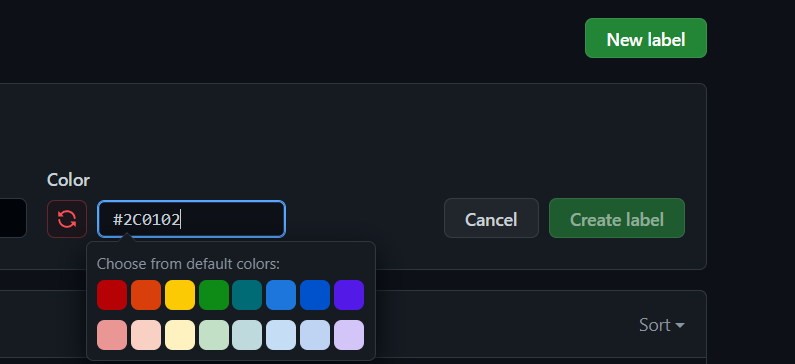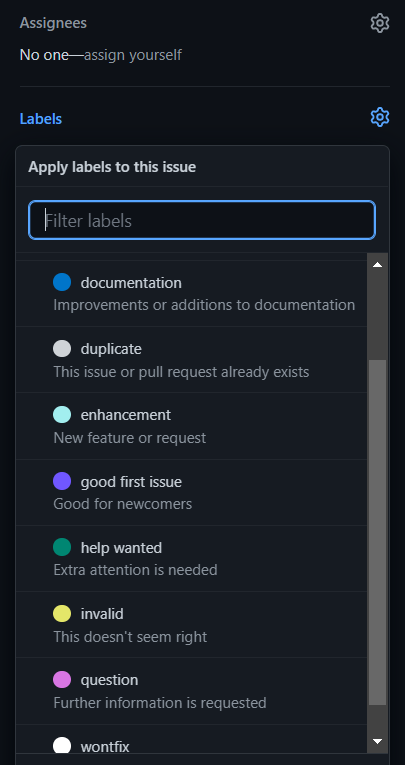GitHub Labels are designed to help developers manage and organize issues and pull requests within their repositories. Labels act as tags that can be applied to issues and pull requests, providing a way to categorize, prioritize, and filter them based on various criteria. This article will explore what GitHub Labels are, their benefits, and how to effectively use them in your projects.
What are the GitHub Labels?
GitHub Labels are tags that you can assign to issues and pull requests to provide additional context. These labels are customizable and can be colour-coded for better visual distinction. By default, GitHub provides several pre-defined labels, such as "bug," "enhancement," and "question," but you can create custom labels to suit the specific needs of your project.
How to Create GitHub Labels for Your Project?
Step 1: Navigate to the main page of the GitHub repository.
 What is GitHub Labels
What is GitHub LabelsStep 2: Go to the issue tab.
 What is GitHub Labels
What is GitHub LabelsStep 3: Go to Labels.
 What is GitHub Labels
What is GitHub LabelsStep 4: Now all the prebuilt labels are enabled for your project.
 What is GitHub Labels
What is GitHub LabelsStep 5: You can Create your own labels by clicking the New label button.
 What is GitHub Labels
What is GitHub LabelsStep 6: You can use label description to describe your label workflow.
 What is GitHub Labels
What is GitHub LabelsStep 7: You can Colour your label by selecting the colors tab.
 What is GitHub Labels
What is GitHub LabelsOnce you're done with the label click on create a label.
Apply Labels to Project Issues
Step 1: Navigate to the repository main page and then got to the issue tab.
 What is GitHub Labels
What is GitHub LabelsStep 2: Select the specific issue you want to add a label to it.
 What is GitHub Labels
What is GitHub LabelsStep 3: Go to the issue and left corner select to apply a label to the issue.
 What is GitHub Labels
What is GitHub LabelsStep 4: After selecting the label for the issue it will be attached to the issue.
 What is GitHub Labels
What is GitHub LabelsWe selected the enhancement label and apply to the issue and now it's visible to the issue.
Deleting Label
After creating a label maybe it needs to be deleted and you can delete the label from issue > label.
 What is GitHub Labels
What is GitHub LabelsBenefits of Using GitHub Labels
- Improved Organization Labels help you categorize issues and pull requests, making it easier to manage and navigate through them. For example, you can use labels to distinguish between different types of issues, such as bugs, feature requests, and documentation updates.
- Enhanced Prioritization By applying labels like "high priority" or "low priority," you can quickly identify the most critical issues that need immediate attention. This helps in efficient resource allocation and project planning.
- Streamlined Collaboration Labels provides better communication and collaboration among team members. By clearly indicating the nature of an issue or pull request through labels, team members can quickly understand the context and take appropriate actions.
- Effective Filtering and Searching Labels enable you to filter and search issues and pull requests based on specific criteria. This is particularly useful in large projects with numerous issues and pull requests, allowing you to focus on a subset that matches your interest or expertise.
Common Use Cases for GitHub Labels
- Categorizing Issues Use labels like "bug," "feature request," "documentation," and "question" to categorize issues based on their nature. This helps in quickly identifying and addressing different types of issues.
- Tracking Progress Labels such as "to do," "in progress," and "done" can be used to track the status of issues and pull requests. This is especially useful in agile development workflows.
- Indicating Priority Labels like "high priority," "medium priority," and "low priority" help in prioritizing tasks. Team members can focus on high-priority issues first, ensuring critical tasks are addressed promptly.
- Assigning Responsibility Labels can be used to assign responsibility to specific team members or teams. For example, labels like "frontend," "backend," or specific developer names can indicate who is responsible for addressing the issue.
Similar Reads
What is GitHub? For collaborative software development, version control systems have become an essential part of the development process. GitHub is one of the most popular platforms for version control and collaborative coding, and it plays an important role in how developers work together, manage their code, and c
6 min read
What Is GitHub Marketplace? GitHub Marketplace is a platform that allows developers and teams to discover, purchase, and integrate tools and applications that extend the functionality of GitHub. It offers a wide range of tools, from CI/CD (Continuous Integration/Continuous Deployment) tools to project management apps. In this
6 min read
What Is GitHub Gist? GitHub offers a feature called GitHub Gist that makes it simple for users to share text-based content, notes, and code snippets. It provides a simple, lightweight method for managing and sharing small content pieces, like scripts, configuration files, and even documentation.In this article, we will
4 min read
What Is a GIT Repository? The repositories of Github act as essential places for storing the files with maintaining the versions of development. By using GitHub repositories developers can organize, monitor, and save their changes of code to their projects in remote environments. The files in the GitHub repository are import
10 min read
What is GitHub Discussion? GitHub is widely known as a platform for hosting and sharing code, but it offers much more than just version control and code management. One of its valuable features is GitHub Discussions, a forum-like space within a repository where developers can engage in conversations, ask questions, share idea
4 min read